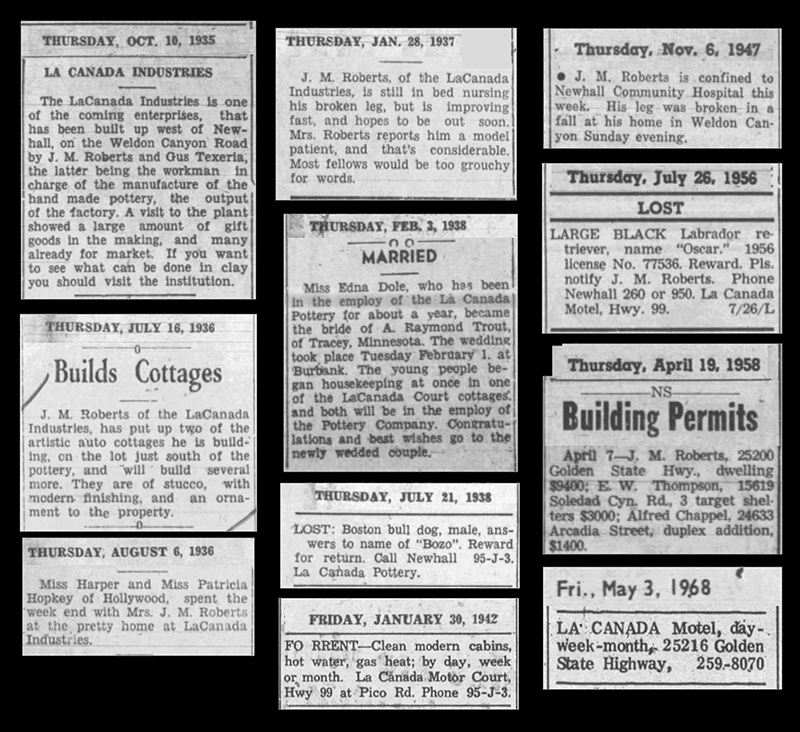|
Alabama native John Maurice "J.M." Roberts established La Cañada Pottery around 1934 just south of the junction of Pico (Canyon) Road and U.S. Highway 99.
Signal Editor A.B. "Dad" Thatcher proclaimed in 1935: "A visit to the plant showed a large amount of gift goods in the making, and many already for market. If you want to see what can be done in clay, you should visit the institution."

1936 retailer's ad.
|
From the mid-1930s, when Gus Texeria was the master potter, until the early-mid 1950s, the company turned out stylish, high-end tableware (dishes, pitchers, serving platters, etc.) with the mark, "La Cañada / Handmade" — which might explain why no two pieces are an exact match.
The company's formal business name was La Cañada Industries Inc., which Roberts incorporated March 26, 1934.
As for the location, when a wildfire threatened the pottery company in 1940, The Signal identified it as one of several businesses at "the Pico crossing." Later, when it was given a five-digit address in the 1950s, it was 25216 N. Golden State Highway. Golden State Highway was U.S. Highway 99, which is now The Old Road in that area. The number 25216 would put it between The Old Road and the present Sunset Pointe development, south of the current Chiquella Lane and north of the current Sagecrest Circle. The area remains a business strip.
Almost from the outset, Roberts and wife Louise augmented their income from the pottery business. In 1936 they erected several stucco-sided auto-camp cottages on the property that The Signal described as artistic with modern furnishings. By 1942, the business was advertised as the La Cañada Motor Court — essentially an extended-stay motel with "clean, modern cabins, hot water, gas heat" that could be rented by the day, week or month.
Online sources indicate the pottery business shifted during World War II to Burbank and shared space with Haldeman Pottery, and that it moved to Apple Valley in the early 1950s, although this is unclear.
J.M. Roberts was still at the same Newhall location after the war and continued to build on-site motel or rental units in the 1950s, when the establishment was known as the La Cañada Motel.
From The Signal we know J.M. and Louise liked to play bridge. We also know J.M. had a propensity to fall and break his leg, and that his big dogs tended to run away. Also, La Cañada Pottery wares were favorite giveaways at local charitable functions such as awards banquets and Red Cross fundraisers.
John M. Roberts died November 4, 1969, in Los Angeles and was buried at Eternal Valley Cemetery in Newhall. He was either 86 or 87 years old. His World War I draft card shows he was born February 2, 1882, while his World War II draft card shows the same date in 1883.
| 

